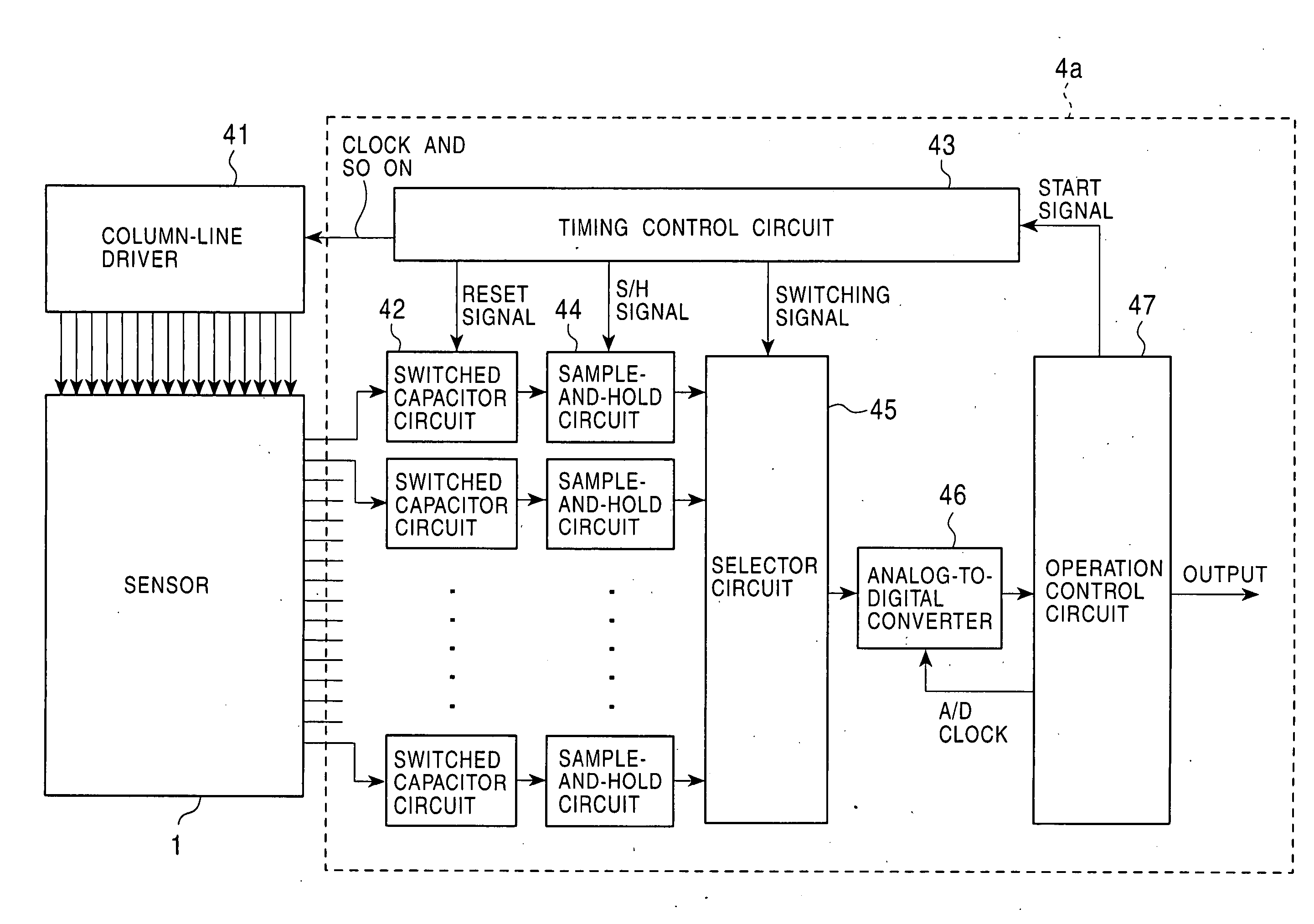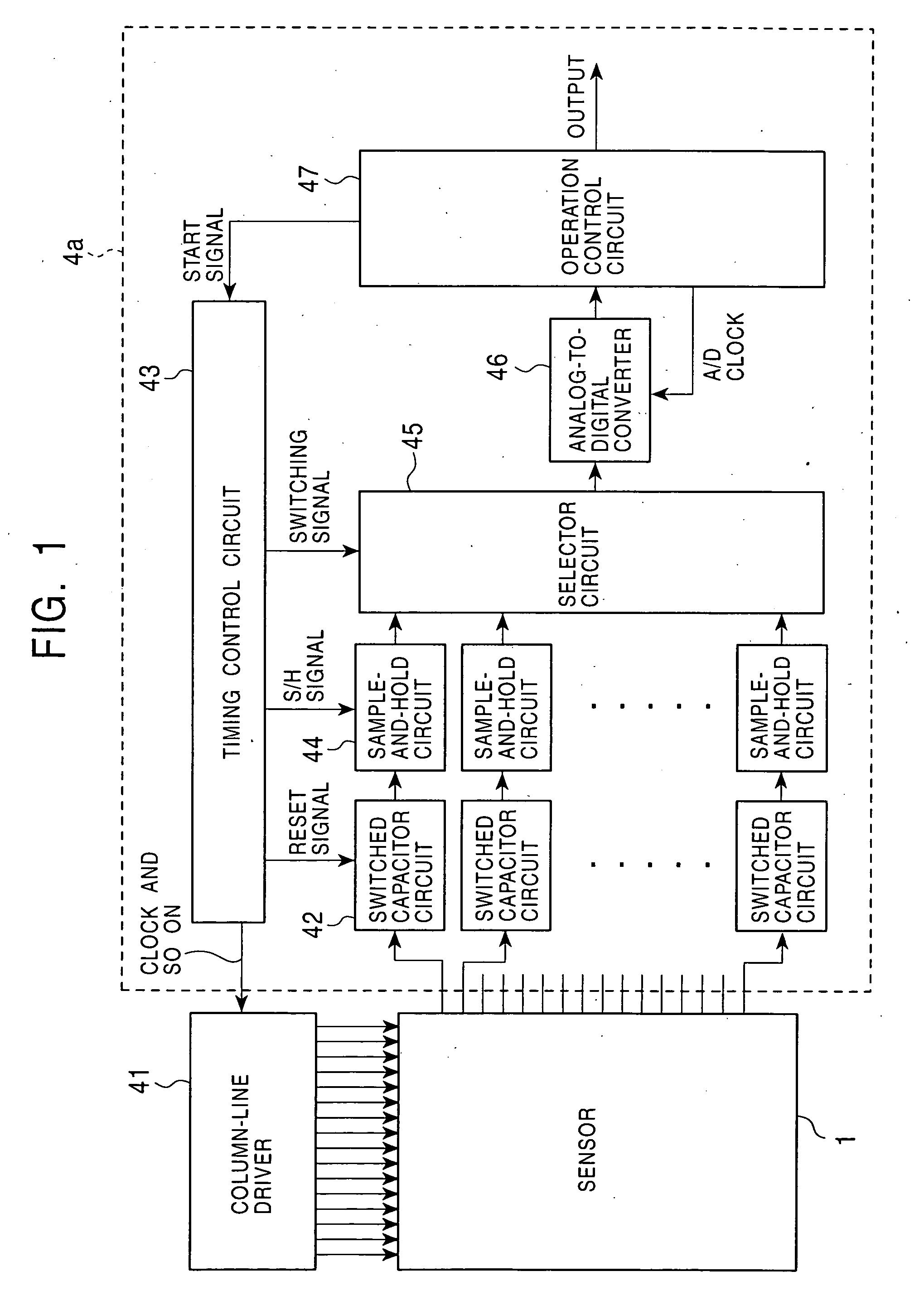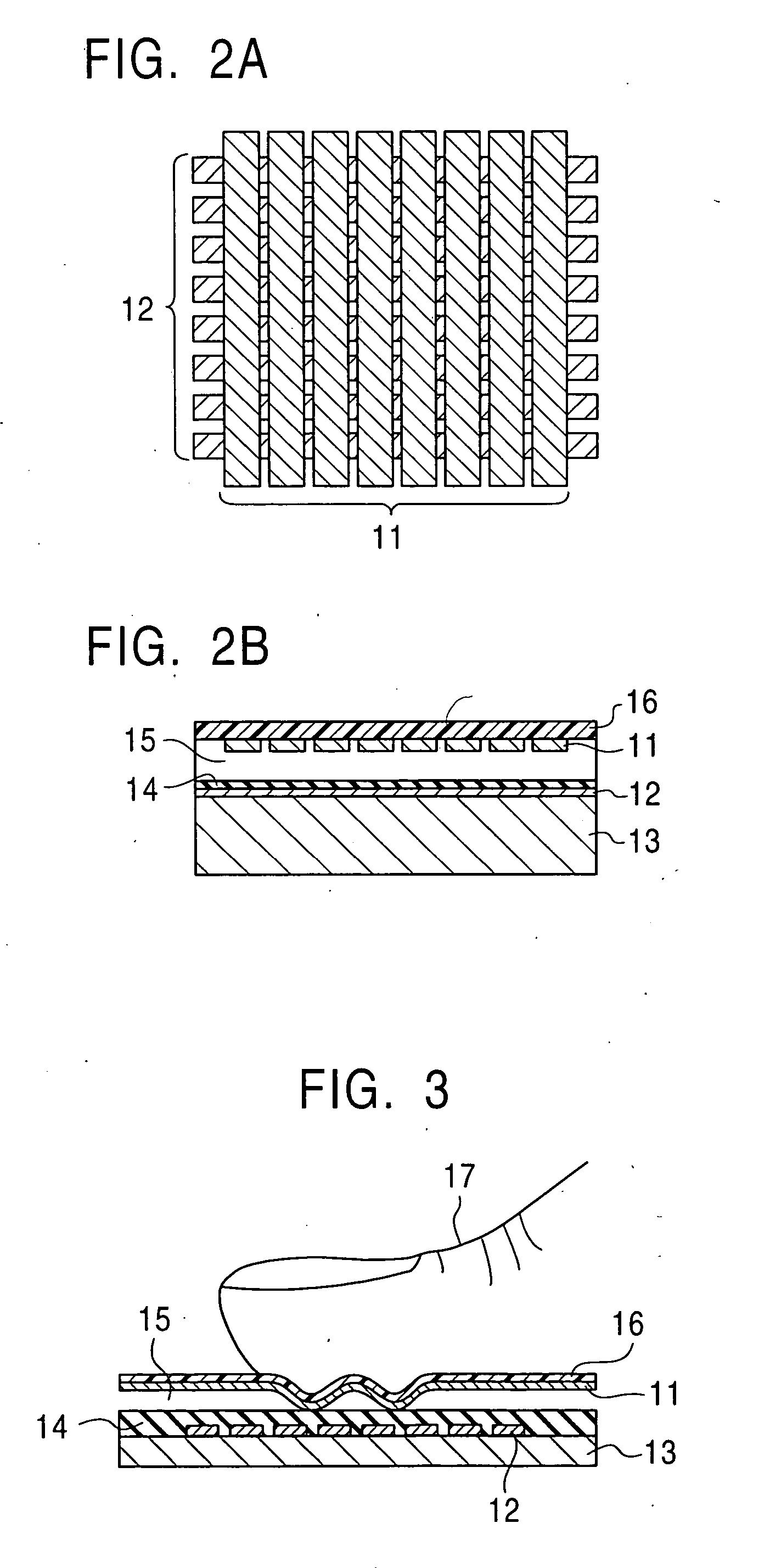Capacitance detector, method of detecting capacitance, and fingerprint sensor
a capacitance detector and capacitance detection technology, applied in the field of capacitance detectors, capacitance detection methods, fingerprint sensors, etc., can solve the problems of difficult to use each of the reference capacitance cr as a standard capacitance in the entire detecting system, and difficult to stably generate a reference capacitance cr
- Summary
- Abstract
- Description
- Claims
- Application Information
AI Technical Summary
Benefits of technology
Problems solved by technology
Method used
Image
Examples
first embodiment
[0036] the present invention will now be described with reference to FIGS. 1 to 7.
[0037]FIG. 1 is block diagram showing the structure of a capacitance detector 4a of the first embodiment. Referring to FIG. 1, a column-line driver 41 (column-line driving means) sequentially outputs signals that rise and fall at predetermined voltages to column lines of a sensor 1. While the column-line driver 41 does not output a signal, it maintains a ground potential. The signals output through row lines of the sensor 1 are supplied to the capacitance detector 4a.
[0038] When the capacitance detector 4a receives the output signals from the sensor 1, it detects a capacitance at each intersection of the column lines and the row lines. Internal functions of the capacitance detector 4a will now be described. A switched capacitor circuit 42 is connected to each row line. The switched capacitor circuit 42 outputs a voltage corresponding to a capacitance of each intersection of the row line connected ther...
second embodiment
[0051] the present invention will now be described.
[0052] Since the sensor 1 of the first embodiment has no reference data, detected values may vary when the structure of the sensor 1 is changed, particularly, when the structure of the sensor 1 is changed due to the variation in capacitance without a finger being pressed on the sensor 1. Accordingly, offset correction data is prepared in advance in the second embodiment.
[0053]FIG. 8 is a flowchart showing a process of correcting offset according to the second embodiment. Referring to FIG. 8, after the detection at all the intersections is completed and results of the operations described above are obtained, in Step Sa1, the process calculates a maximum amplitude from the maximum and minimum values among the detected values at all the intersections. In Step Sa2, the process determines whether the calculated maximum amplitude exceeds a reference value set in advance. If the determination is negative, the process determines that the d...
third embodiment
[0056] the present invention will now be described with reference to FIGS. 9 and 10.
[0057]FIG. 9 is a block diagram showing the structure of a capacitance detector 4b of the third embodiment. Referring to FIG. 9, the column-line driver 41 and the sensor 1 are the same as in the first embodiment shown in FIG. 1. However, the capacitance detector 4b of the third embodiment differs from the capacitance detector 4a of the first embodiment in that the capacitance detector 4b further includes a variable-gain amplifier 51 provided between the selector circuit 45 and the analog-to-digital converter 46. The gain level of the variable-gain amplifier 51 is adjusted based on a gain-level control signal output from the operation control circuit 47. As a characteristic of a fingerprint sensor, as long as the level of data at peaks can be determined relatively to the level of data at troughs, any difference in the absolute level of data causes no problem. Accordingly, the function of adjusting the...
PUM
 Login to View More
Login to View More Abstract
Description
Claims
Application Information
 Login to View More
Login to View More - R&D
- Intellectual Property
- Life Sciences
- Materials
- Tech Scout
- Unparalleled Data Quality
- Higher Quality Content
- 60% Fewer Hallucinations
Browse by: Latest US Patents, China's latest patents, Technical Efficacy Thesaurus, Application Domain, Technology Topic, Popular Technical Reports.
© 2025 PatSnap. All rights reserved.Legal|Privacy policy|Modern Slavery Act Transparency Statement|Sitemap|About US| Contact US: help@patsnap.com



